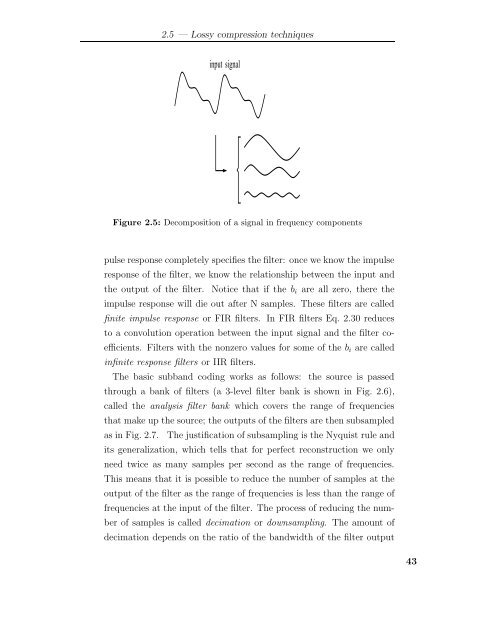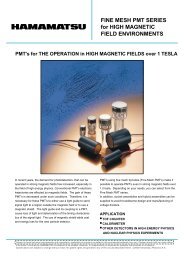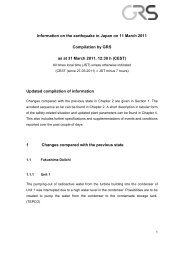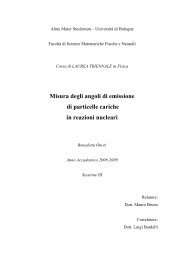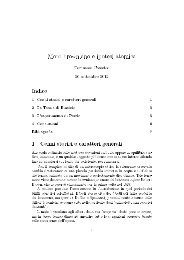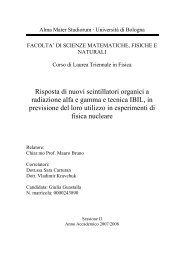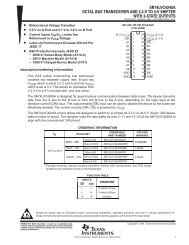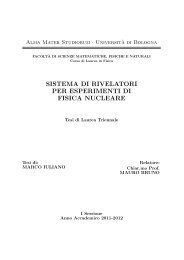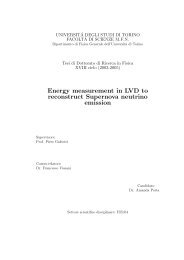hardware implementation of data compression ... - INFN Bologna
hardware implementation of data compression ... - INFN Bologna
hardware implementation of data compression ... - INFN Bologna
Create successful ePaper yourself
Turn your PDF publications into a flip-book with our unique Google optimized e-Paper software.
2.5 — Lossy <strong>compression</strong> techniques<br />
input signal<br />
Figure 2.5: Decomposition <strong>of</strong> a signal in frequency components<br />
pulse response completely specifies the filter: once we know the impulse<br />
response <strong>of</strong> the filter, we know the relationship between the input and<br />
the output <strong>of</strong> the filter. Notice that if the bi are all zero, there the<br />
impulse response will die out after N samples. These filters are called<br />
finite impulse response or FIR filters. In FIR filters Eq. 2.30 reduces<br />
to a convolution operation between the input signal and the filter coefficients.<br />
Filters with the nonzero values for some <strong>of</strong> the bi are called<br />
infinite response filters or IIR filters.<br />
The basic subband coding works as follows: the source is passed<br />
through a bank <strong>of</strong> filters (a 3-level filter bank is shown in Fig. 2.6),<br />
called the analysis filter bank which covers the range <strong>of</strong> frequencies<br />
that make up the source; the outputs <strong>of</strong> the filters are then subsampled<br />
as in Fig. 2.7. The justification <strong>of</strong> subsampling is the Nyquist rule and<br />
its generalization, which tells that for perfect reconstruction we only<br />
need twice as many samples per second as the range <strong>of</strong> frequencies.<br />
This means that it is possible to reduce the number <strong>of</strong> samples at the<br />
output <strong>of</strong> the filter as the range <strong>of</strong> frequencies is less than the range <strong>of</strong><br />
frequencies at the input <strong>of</strong> the filter. The process <strong>of</strong> reducing the number<br />
<strong>of</strong> samples is called decimation or downsampling. The amount <strong>of</strong><br />
decimation depends on the ratio <strong>of</strong> the bandwidth <strong>of</strong> the filter output<br />
43


